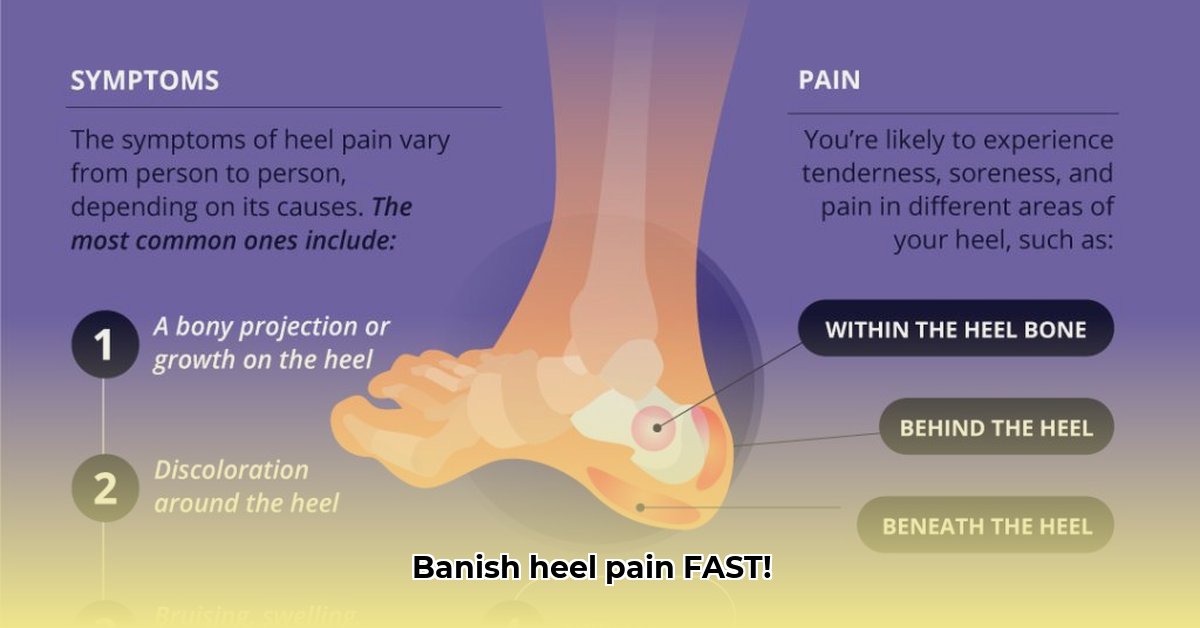
Ag, that heel pain! It’s a real moegoe, isn’t it? Many South Africans experience heel pain, often due to plantar fasciitis (inflammation of the tissue on the bottom of your foot). This guide provides practical steps for quick relief and lasting comfort. Remember, while this focuses on self-help, persistent or severe pain needs professional attention.
Immediate Relief: Sorting Out the Soreness (0-7 Days)
These first few days are about fast relief. Think of it like first aid for your voetjies.
Step 1: Ice, Ice, Baby: Apply an ice pack (wrapped in a damp cloth) to your heel for 15-20 minutes, 3-4 times a day. This reduces inflammation. Is ice therapy really that effective? Studies show it significantly reduces pain and swelling in the early stages.
Step 2: Roll Away the Pain: Use a frozen water bottle or tennis ball to gently roll your heel, easing muscle tension. How much pressure should I use? Gentle, firm pressure; stop if it hurts.
Step 3: Stretch it Out: Perform simple calf stretches, holding each for 30 seconds, repeated three times. Where can I find visual guides for these stretches? Many online resources demonstrate proper techniques.
Long-Term Management: A Pain-Free Future
Once the initial pain subsides, focus shifts to prevention. This builds good habits to keep heel pain away.
Step 1: Shoe Sense: Ditch those flat, unsupportive shoes! Invest in supportive footwear with good arch support. What kinds of shoes are best? Supportive sneakers or walking shoes are ideal.
Step 2: Lifestyle Tweaks: Carrying extra weight puts extra strain on your feet. Even a small amount of weight loss helps. How can I adjust my activity levels? Listen to your body and rest when needed.
Step 3: Make Stretching a Habit: Aim for a short daily stretching routine. Consistency is key. How often should I stretch? Daily stretching is crucial for long-term success.
Step 4: Night Splints (Optional): These keep your foot flexed during sleep, preventing overnight tightening. Are night splints really necessary? Some find them very beneficial, while others don't.
When to Seek Professional Help
While home care is effective, see a doctor or physiotherapist if:
- Pain is intense or doesn't improve after a week.
- You experience numbness, tingling, or weakness.
- Swelling, redness, or infection is present.
Wrapping it Up: Your Journey to Happy Feet
Curing heel pain isn't a quick fix, but a combination of smart strategies. By combining immediate relief with long-term care, you'll be well on your way to pain-free feet. Be patient, be consistent, and you'll get there!
Key Takeaways:
- Immediate relief focuses on ice, massage, and gentle stretching.
- Long-term management includes supportive footwear, lifestyle changes, and consistent stretching.
- Persistent or worsening pain requires professional medical attention.